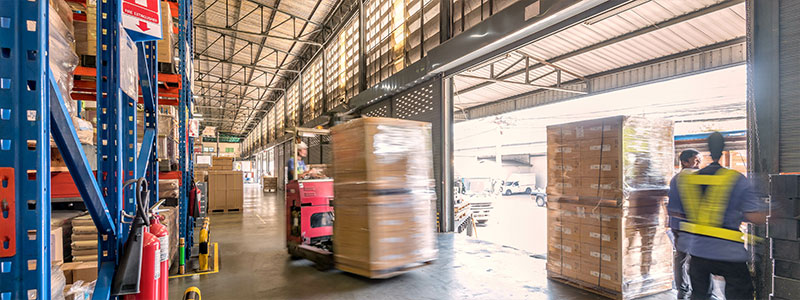
The safety of your warehouse workers should be of the utmost importance to you, and one area of safety you should always keep in mind is pallet racking safety. Your storage equipment is the essence of your warehouse, and it is what takes up most of the space in your warehouse. To ensure workers’ safety, annual rack safety inspections performed by rack safety experts are not enough. Internal inspections should be done on more regular intervals such as every week, every other week, or every month. Check for damage to the racks and be sure your workers are following the safety protocols you have put in place. Here are some tips to help employees adhere to safety guidelines.
Correct Labeling. Be sure each pallet rack is labeled with its correct weight capacity. If workers do not know the weight capacity of the rack, it is easy for the rack to become overloaded and unstable. With the correct labeling, employees know how they should position loads and how many items they can place on any given rack. Labels give warehouse workers the vital information they need to know at a glance. Make sure the labels you are using are just as durable as the racks themselves. The weight capacity of a rack will not change over time, so make sure the ret last the lifetime of the rack.
Rack Inspections. When going in to inspect a rack, each individual component of the rack should be taken into account. Front and rear posts, uprights, baseplates, beams, and braces and all sustain damage from forklifts, issues with the original construction of the system, incorrect pallet insertion, and various other errors which cause damage. Put together a checklist of all areas which need to be regularly checked to ensure that nothing is overlooked. Even the smallest compromised area can spell out disaster when it finally gives out.
Properly Placed Loads. Pallet racks are like any other piece of equipment and should be used properly at all times. This includes placing loads on pallet racks in the proper way to ensure maximum safety and function. Items which have been placed on pallet racks should be properly secured to prevent them from moving and potentially causing damage or injury. Again, it is important to know the rack’s holding capacity so it is not overloaded—especially on the upper levels. Workers also need to know how to account for the dimensions and shape of the load they are taking to be stored. They should know which types of loads go on which types of racks and how they affect the rack’s load capacity.


.png)

